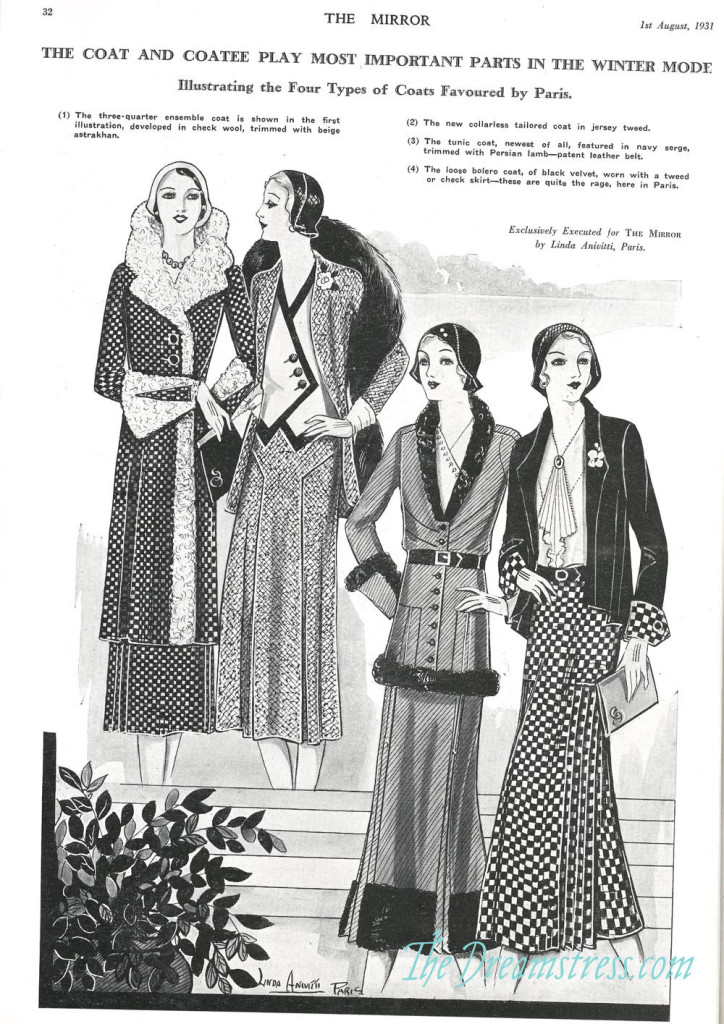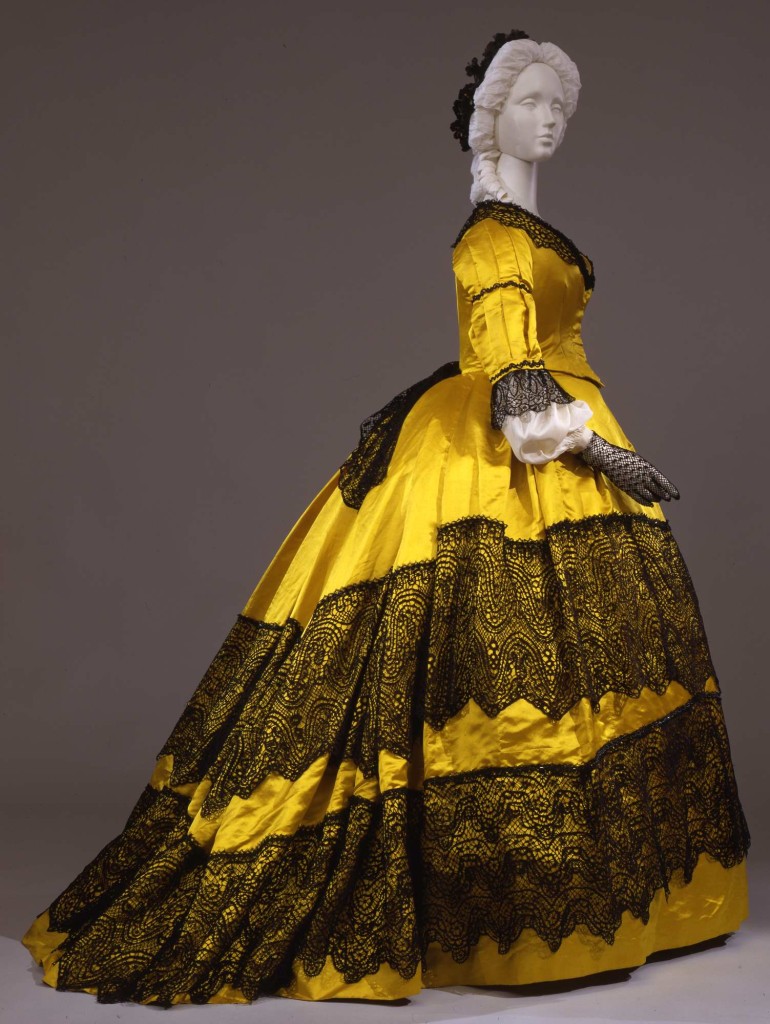In addition to having finished the buttons for it, I’ve got my 1370ish medieval gown all sewn together:
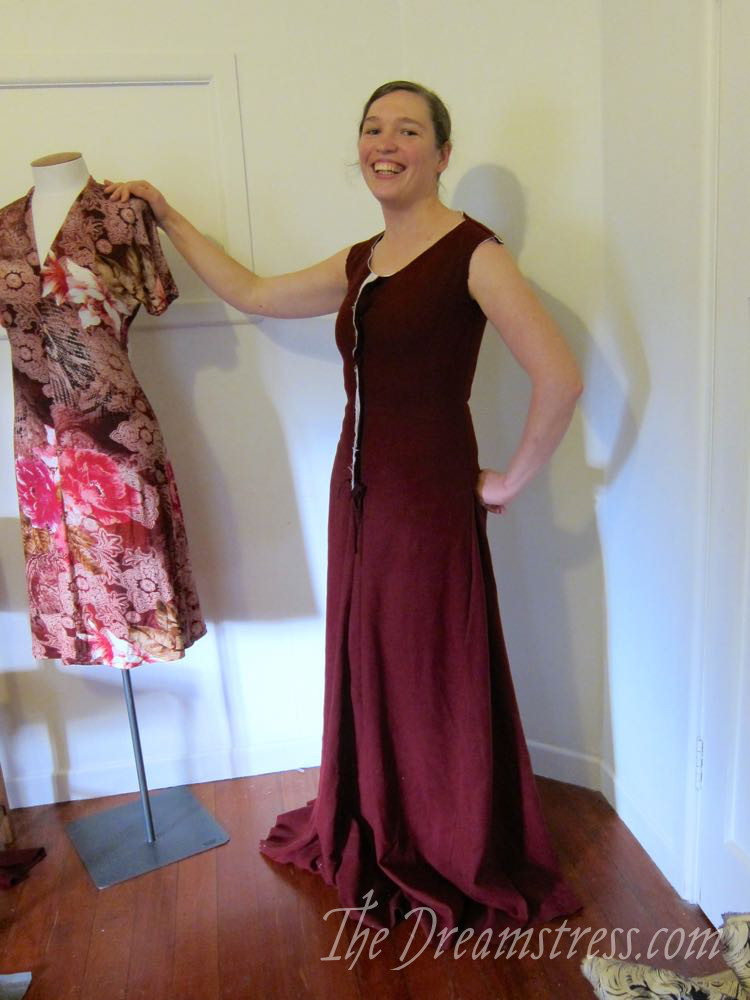
Actually, it’s been sewn together for almost two weeks now, but I’ve been busy working and making class samples (one seen in the photo with me) and having events and generally living life, and haven’t been able to do much work on it.
To sew it, I cut a linen lining for the bodice (using a great piece of vintage linen with very little give), flat lined the bodice sections, and sewed the dress together.
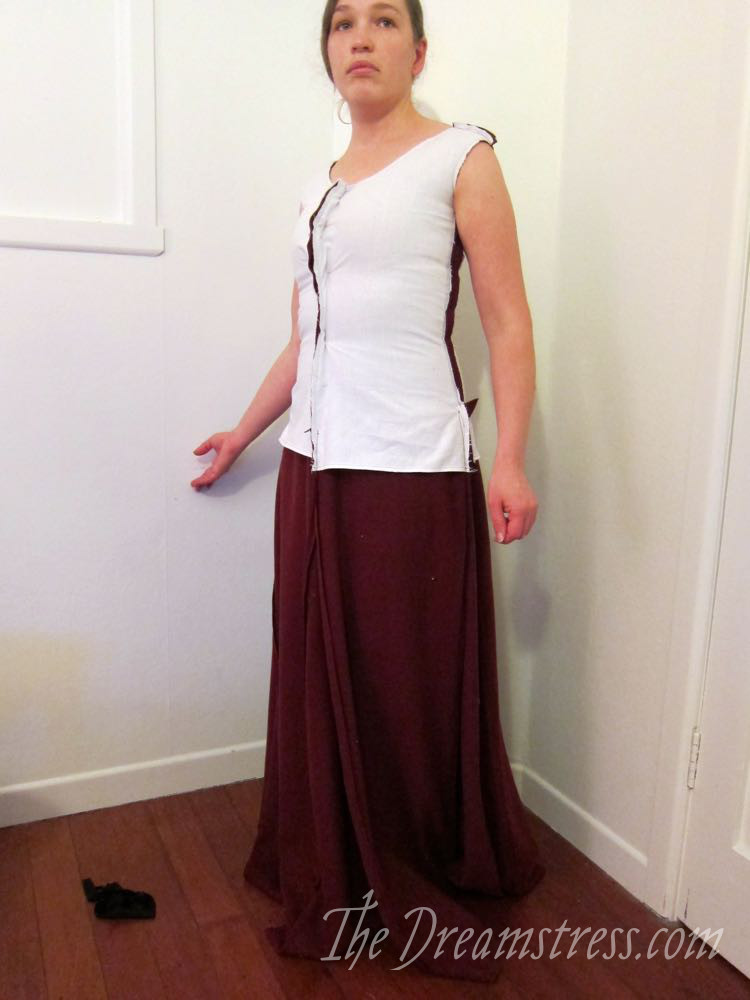
I’m doing all the main seaming with machine sewing, because between winter chillblains and arm stress extensive hand-sewing will just be too painful this time of year. I know it won’t be totally historically accurate this way, but I also know even if I did hand sew it probably wouldn’t be totally historically accurate anyway.
I’m thinking of this as a learning garment — a working toile if you will. I know I won’t get it all right, but I also know this is the most effective way for me to learn a lot, so that the next time I will.
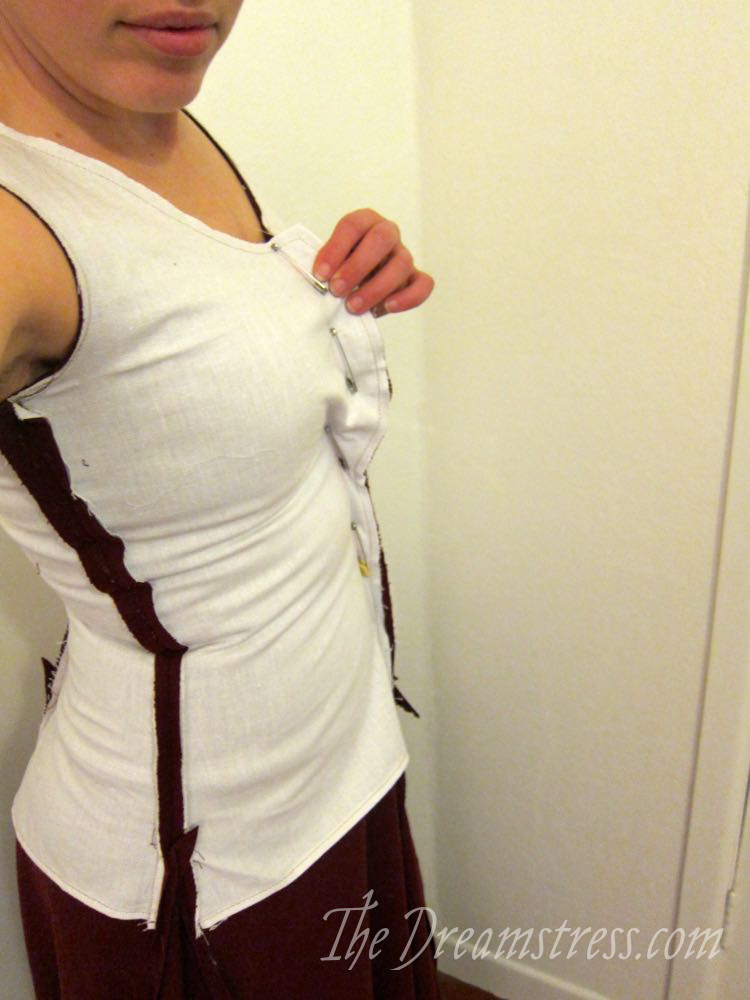
The first fitting definitely had a few fit-ssues. Far too much fabric in the bodice to support me, wrinkles across the torso, and the whole bodice was sitting too low. (side note: I had no idea what the HA way to finish the bottom of a linen lining was, so I just folded it up and stitched. At least it’s on the inside!)
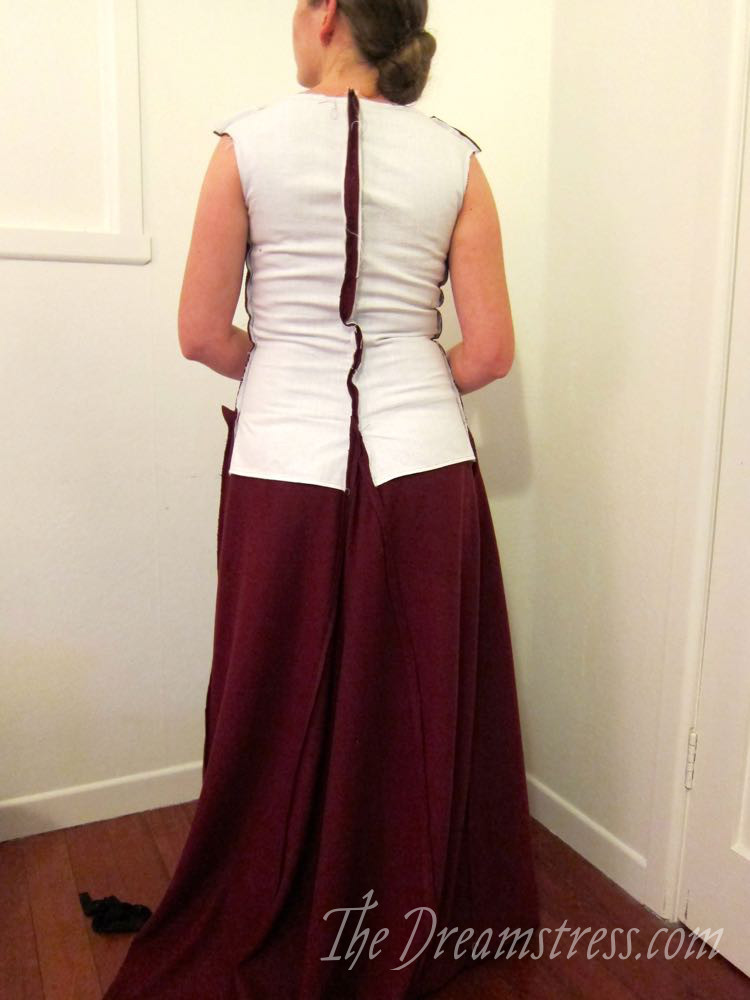
And terrible, terrible back wrinkles. The back and torso wrinkles are mostly about it being too snug in the wrong places, so they can be fixed by re-adjusting seam allowances (thank goodness I used 1.5cm seam allowances!).
The big issue I needed to fix before tackling those was the too-low bodice, which I fixed with the simple expediency of raising the shoulder seams, and re-cutting the armholes. I’ll still need to finesse the neckline when I get to finishing, but that’s a fair way off.
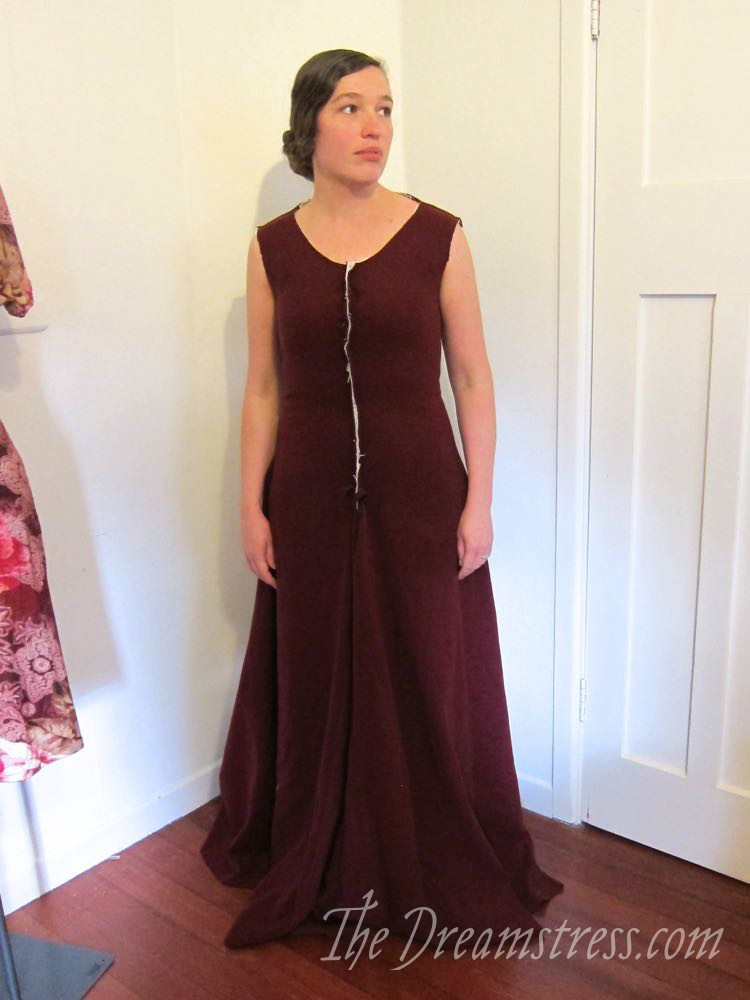
Raising the armholes also re-adjusted the tightness around my torso, which helped a bit with the back wrinkles, though there are still a few:
 In addition to the obvious fitting issues of ‘this is too baggy in this spot / too tight in this’ I’m also really trying to think about how a medieval dress actually fits a body, as opposed to how we think clothes should fit the body – as period fit is not necessarily modern fit, for any period.
In addition to the obvious fitting issues of ‘this is too baggy in this spot / too tight in this’ I’m also really trying to think about how a medieval dress actually fits a body, as opposed to how we think clothes should fit the body – as period fit is not necessarily modern fit, for any period.
In looking at inspiration when I first embarked on medieval clothing I quickly decided I preferred the fashions of about 1370-80, because the earlier 14thc is very sack-y, with little shaping, and the early 15th century is very curv-y and bust-y, which I am not.
Basically I looked at Katherine’s effigy and thought ‘yep, that’s my body’ (sorry, not the best photo to show her whole body shape):
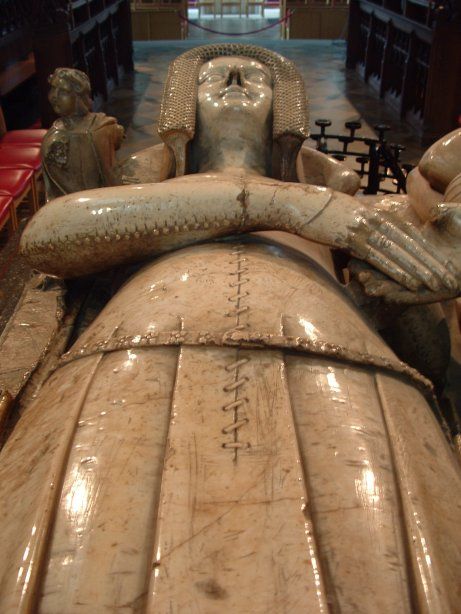
Effigy of Katherine, Countess of Warwick, died 1369
Then I looked at the more fashionable lady in blue in this image, and though “It is just not possible to show off that much of my bust and still have any curve – red lady is way more realistic”

Guillaume de Machaut watching the disappointed lover. РThe Judgement of the King of Navarre. Mątre Policratique . 1380-1395
So I had a vague idea of shape changes in the 14th century from sack to flat to boob-a-thon, with corresponding lowering necklines, and knew I was going for option B simply because it fits my body best, and my (admittedly) modern sensibilities, which aren’t quite ready for wool sack (though I think I’m going to develop a love of wool sacks very quickly!).
I didn’t really analyse my observations any more than that, until Panth commented that I should look closely at the silhouettes in images (well worth it to scroll down and read the comments). In doing so, I found her amazing blog post series on the 14th century bust shape (well, well worth it to read the whole series).
Her blog post answered so many of the questions I had about bust fit. Most of the bloggers who have done 14th century extensively and blogged about fitting and pattern draping are quite busty women, and while they talk about bust support and fit, it wasn’t always clear to me what was period, and what was their desire to support their bust. It is just not possible for me to have a lifted bust, with cleavage, and outward curve. I can, however, very effectively have a quite androgynous torso, with just a hint of bust and waist. Beyond fit, I just have a fashionable 1370s body, rather than a fashionable 1390s body.
Panth’s posts have given me a clear set of guidelines as I get to the final fit, so that I (hopefully) produce something that matches a specific 14th century set of ideals and silhouette, not a modern interpretation based on our ideals of fit and silhouette.
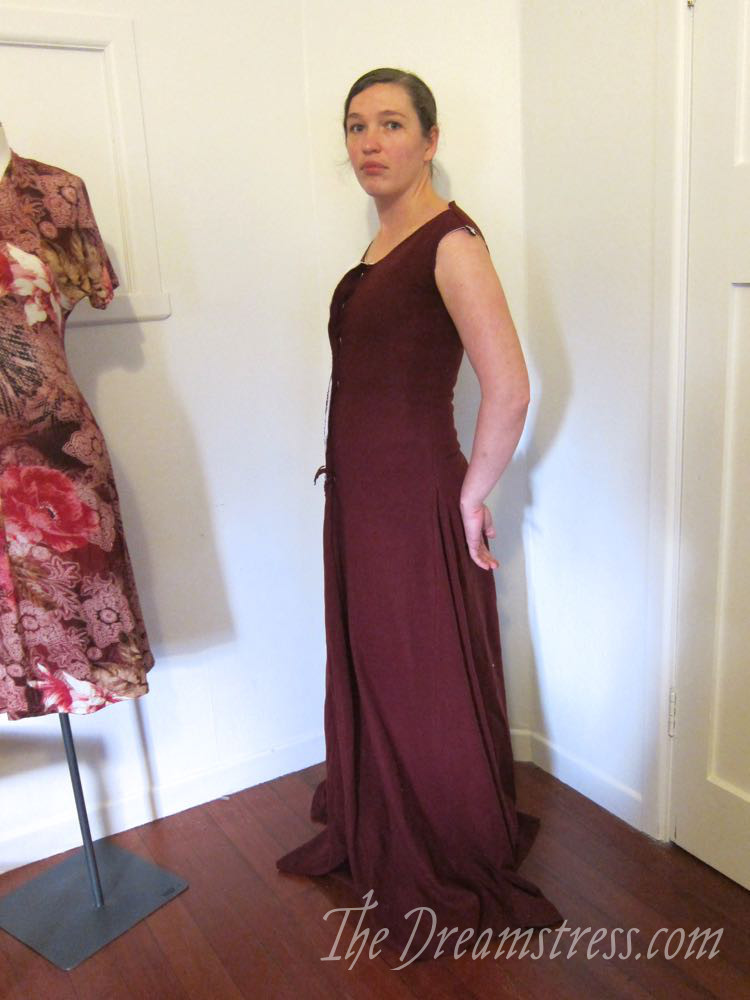
At this point, though there are still fit-sues, I’m ready to finish the front opening edge, and to sew the lacing holes. With that done, I can finesse the final fit, finish the neckline, set the sleeves, do endless amounts of interior seam finishing, and equally endless amounts of hemming.

I’m pretty sure that the correct way to finish the front opening (other than tablet weaving, which I’m not going to attempt, and which, while it is period, doesn’t seem to have been universally used by any means, so skipping it is not cheating) is to turn the wool and linen in towards each other, so that raw edges are hidden, and then sew.
Anyone know if a stab stitch or whipstitch would be more accurate? I have poured through my sources and can’t find the answer.
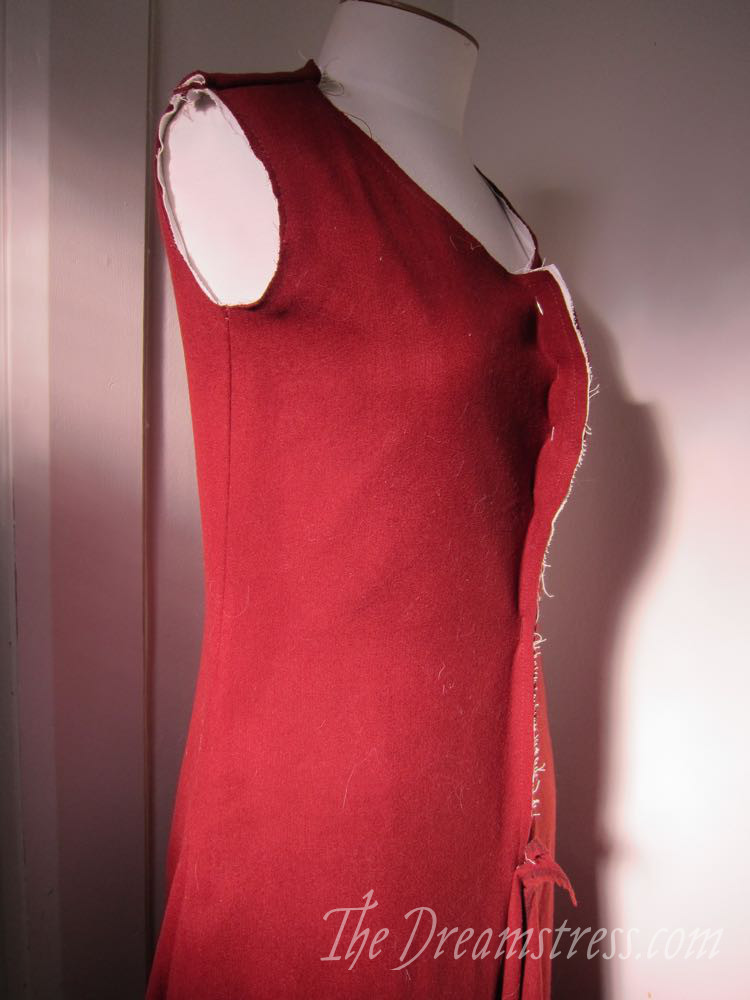
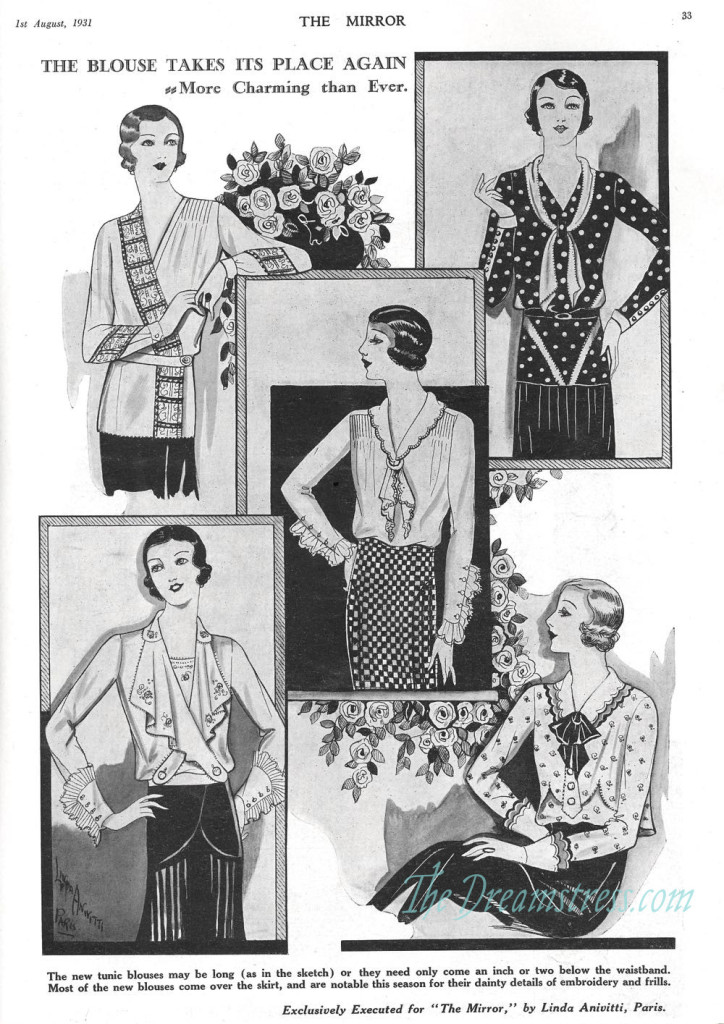 I particularly like the asymmetrical number at top left, and the lower left number with it’s cunning cross details – though I think I’d struggle to get away will all the frills and fuss.
I particularly like the asymmetrical number at top left, and the lower left number with it’s cunning cross details – though I think I’d struggle to get away will all the frills and fuss.
